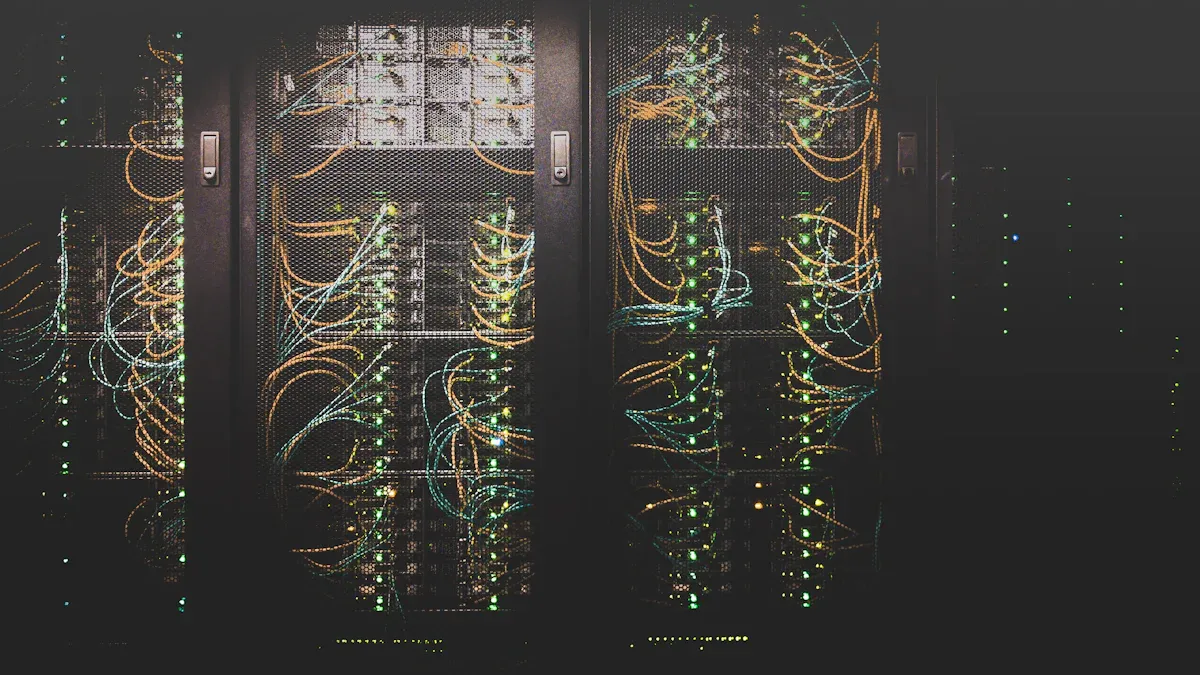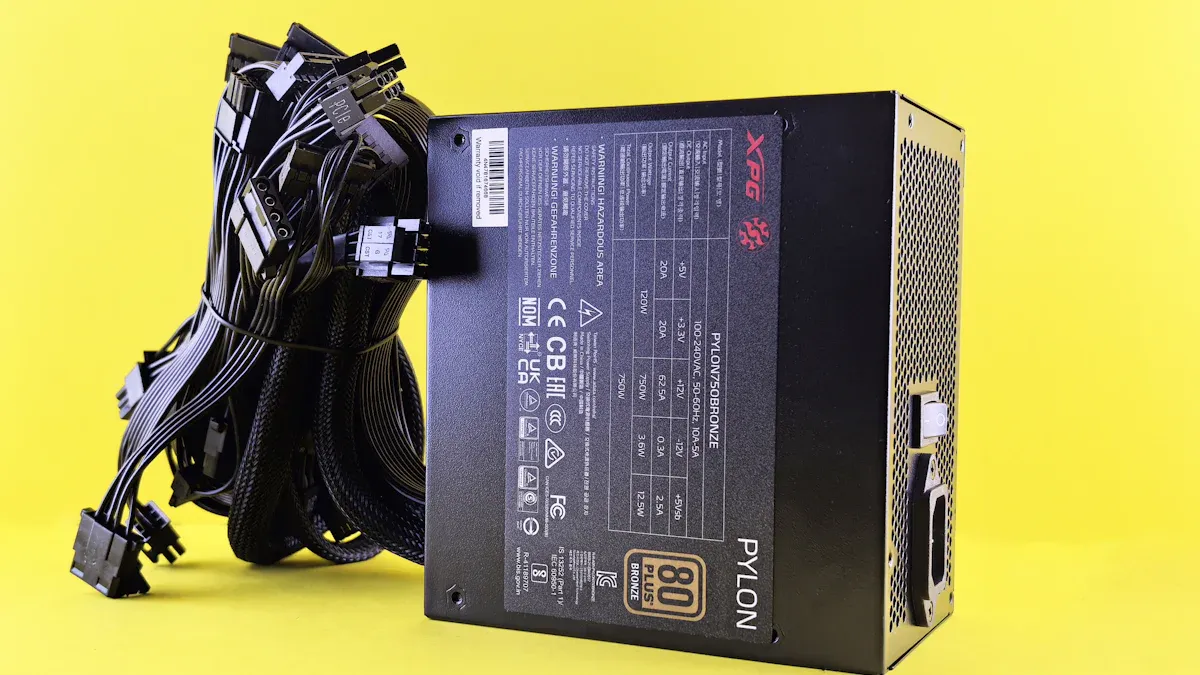
I often get asked about Smart PDUs. For me, a Smart PDU isn’t just another power strip; it’s a game-changer! It’s an advanced power distribution unit that gives us network-connected monitoring, management, and control over power in our IT environments. You might also hear me call it an Intelligent PDU. These devices really go beyond simply supplying power. They offer intelligent capabilities that boost operational efficiency and reliability, making them far superior to basic PDUs.
Key Takeaways
- Smart PDUs are advanced power strips. They let you watch, manage, and control power in IT systems from a network.
- There are three main types of Smart PDUs: Metered, Switched, and Metered-by-Outlet Switched. Each type offers different levels of control and monitoring.
- Smart PDUs help keep IT systems running, plan for future power needs, and save money on energy. They do this by giving real-time data and remote control.
Understanding the Types of Smart PDU

When I talk about Smart PDUs, I often find it helpful to break them down into a few main types. Each one offers different levels of control and monitoring, so you can pick what works best for your setup.
Metered Smart PDU
First up, we have the Metered Smart PDU. I see these as the foundation for intelligent power management. They give me real-time power monitoring, showing me current, voltage, power, and even kilowatt-hours at the input, branch, or outlet level. I really appreciate their high metering accuracy, often with a 0.5% error margin, which means I get precise data. These units usually have LED or LCD screens to display metrics, and some even offer rotatable displays. I can also manage power distribution remotely, even rebooting or turning off devices from my computer or phone. They connect to the network, sending power usage data to central platforms and integrating with DCIM tools. Plus, they often include advanced alarm systems that notify me about potential overloads or equipment failures, which helps me stay proactive.
Switched Smart PDU
Next, I often use Switched Smart PDUs. What I love about these is the individual outlet control. I can turn each outlet on, off, or power-cycle it as needed. This capability is a game-changer for me because I can remotely reboot unresponsive equipment, schedule power usage, or sequence power-on events to prevent electrical overloads. These PDUs offer remote access and management through web interfaces, APIs, or SNMP. They also support networking and security integration, fitting right into my existing enterprise systems. I can even set up automation and alerts, like automatically turning outlets on or off based on certain conditions. For me, this means better uptime and remote recovery, reducing the need for on-site visits. I also use them for efficiency and capacity planning, measuring power consumption per outlet and staggering equipment startup to avoid inrush currents.
Metered-by-Outlet Switched Smart PDU
Finally, there’s the Metered-by-Outlet Switched Smart PDU. This type is, in my opinion, the most comprehensive. It combines the best features of both metered and switched PDUs. I get all the individual outlet control of a switched PDU, but I also gain the ability to monitor power consumption at each individual outlet. This gives me incredibly granular data and control. I can see exactly how much power each device is drawing and manage it independently. It’s perfect for environments where I need maximum visibility and control over every single piece of equipment.
Key Features and Functionality of an Intelligent PDU
When I think about what makes an Intelligent PDU so powerful, I really focus on its core features. These aren’t just fancy add-ons; they are essential tools that help me manage my IT environment much more effectively.
Remote Power Monitoring and Environmental Sensing
One of the biggest advantages I find with an Intelligent PDU is its ability to monitor things remotely. I can get real-time data on power consumption, which helps me spot devices using too much energy. This data is usually available through a web interface, so I can check on my equipment from anywhere. For example, I can see the current, voltage, power, and even kilowatt-hours for individual outlets or groups of outlets.
Beyond just power, these PDUs often come with environmental sensors. I find these incredibly useful because they give me a full picture of my data center’s health. They can monitor things like:
- Temperature
- Humidity
- Water leakage
- Airflow
- Door intrusion and security
- Smoke
- Vibration
- Human body sensing
- CCTV
This comprehensive monitoring helps me keep an eye on everything, ensuring my equipment stays safe and runs smoothly.
Remote Power Control and Management
The ability to control power from a distance is a game-changer for me. Intelligent PDUs let me manage power for a single unit or even a whole group of PDUs, right down to individual outlets, without needing to be physically present. This means I can:
- Remotely turn on, off, or reboot equipment. If a server freezes, I can power cycle it from my desk, saving me a trip to the data center.
- Control the order in which devices power up after an outage. This “staged power-up sequencing” prevents sudden power surges and makes sure critical systems come online first.
- Switch power on or off at individual outlets. This is super helpful for managing power in large facilities or across an entire network.
These PDUs use standard protocols like HTTP, HTTPS, Telnet, SSH, SNMP, RESTful API, and Webhooks for remote control and monitoring. This makes them easy to integrate into my existing IT systems.
Data Collection and Alerting Capabilities
Intelligent PDUs are excellent at collecting detailed power usage data. They track important metrics like:
- Voltage (V)
- Current (A)
- Active power (kW)
- Apparent power (kVA)
- Energy (KWh)
- Power factor
This data helps me understand exactly how much power my equipment uses. But collecting data is only half the story; I also need to know when something goes wrong. That’s where the alerting capabilities come in.
Smart PDUs offer several ways to notify me about power events. For instance, I can set them up to send alerts via:
- SNMP (Simple Network Management Protocol): These alerts go to my SNMP manager tool. I just need to enable ‘SNMP Notifications’ and set my thresholds.
- SMTP (Simple Mail Transfer Protocol): I can receive alerts as emails. I configure an SMTP server in the device settings, and I often use a separate service account for the ‘Sender Email Address’ so I can easily track where the alerts come from.
I can set specific thresholds for things like current, voltage, and power. If an inlet current reaches a ‘Warning’ or ‘Critical’ level, the PDU can automatically send me an email. This proactive approach helps me address potential issues before they become major problems.
Integration with DCIM
For me, the real power of an Intelligent PDU shines when it integrates with Data Center Infrastructure Management (DCIM) tools. This integration gives me a complete view of my data center operations. Most Smart PDUs work seamlessly with DCIM tools and support multiple communication protocols like SNMP and HTTP.
This integration brings many benefits:
- Enhanced Energy Efficiency: I can optimize power consumption and reduce waste.
- Improved Control and Flexibility: I get better management capabilities for power distribution.
- Cost Savings: Efficient power management directly leads to reduced operational costs.
- Reliable Equipment Protection: Features protect my equipment from power-related issues.
- Effective Monitoring and Management: I get real-time monitoring of power distribution and environmental conditions.
- Scalability: As my data center grows, DCIM integration simplifies management and enhances efficiency.
By integrating my Smart PDU data into DCIM, I can increase power efficiency by 20% through better load balancing and capacity planning. Equipping PDUs with environmental sensors can even lead to 10-15% savings in cooling costs. Overall, DCIM tools can boost my data center’s energy efficiency by up to 20%. This means reduced downtime, better capacity planning, and proactive maintenance, all contributing to a more reliable and efficient operation.
Post time: Nov-13-2025





